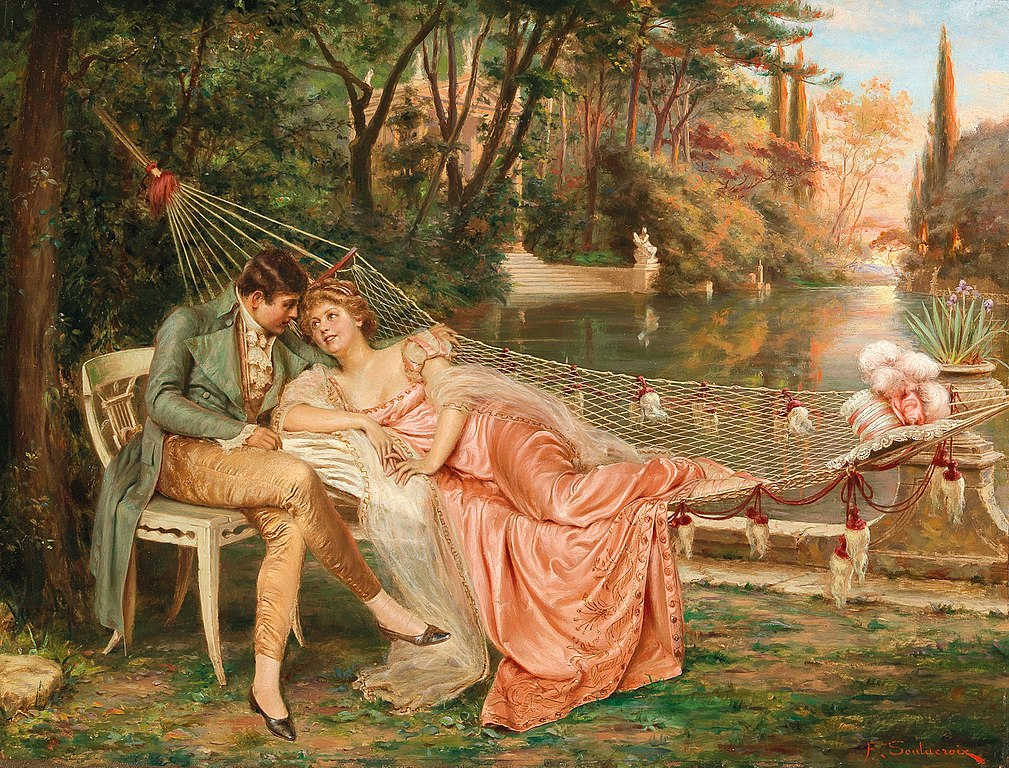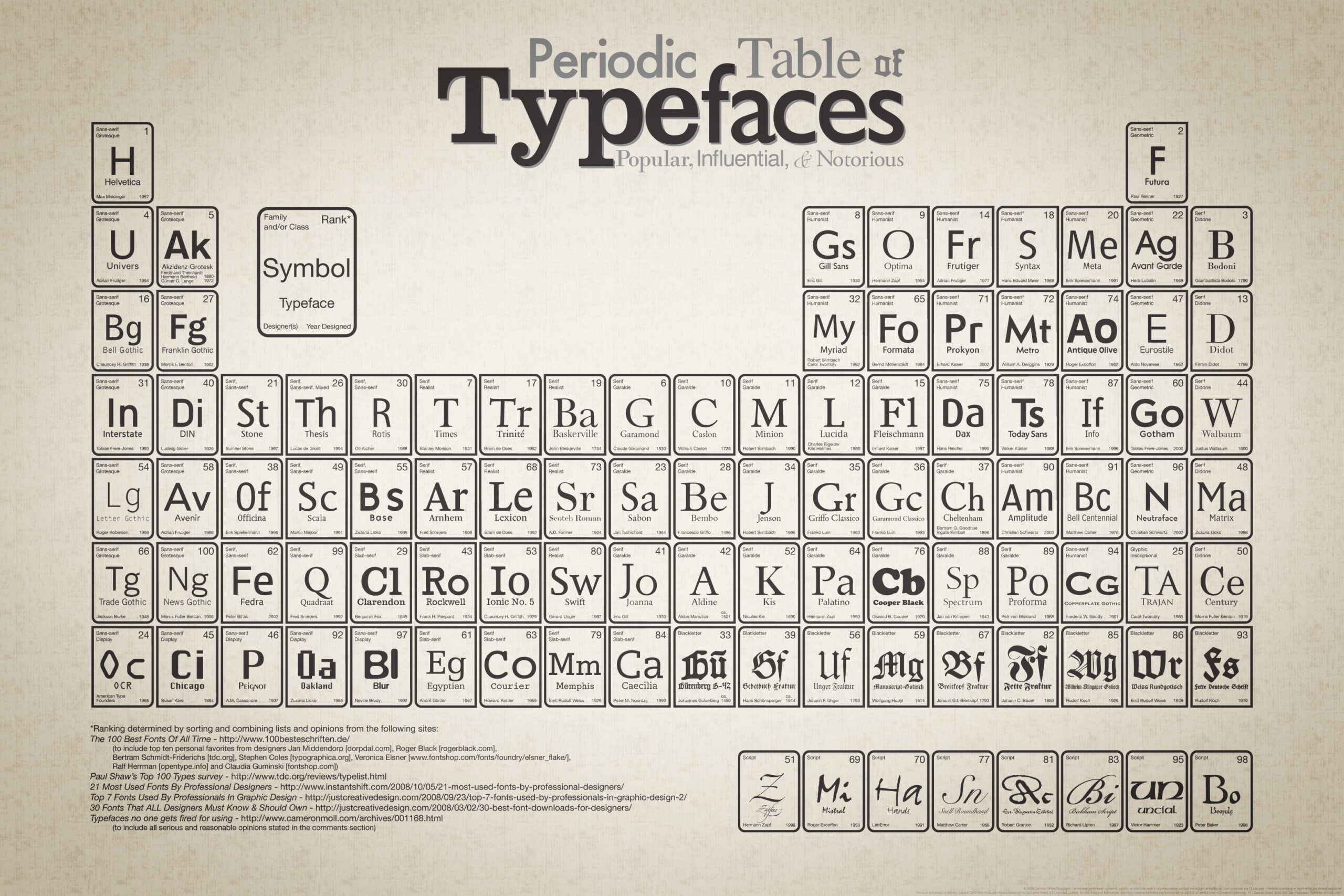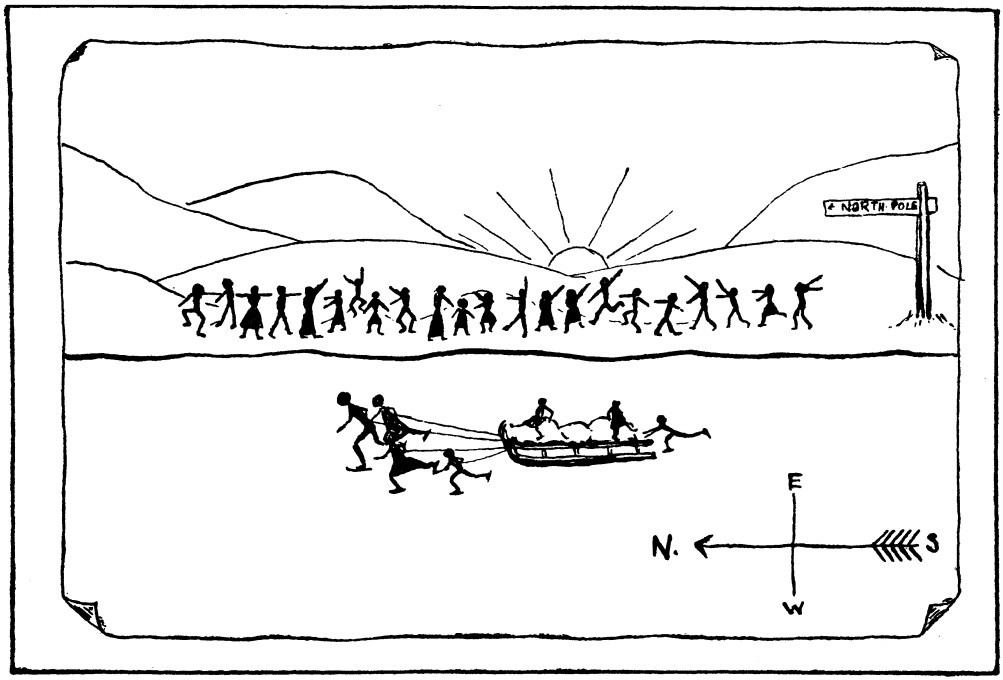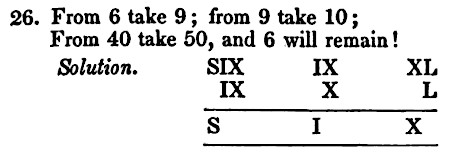In Arthur Ransome’s 1933 children’s novel Winter Holiday, Nancy Blackett, quarantined with mumps, sends a picture to her friends of a sledge being drawn by skating figures. Nancy is encouraging the group to pursue their plan to explore a frozen lake. The seven figures in the picture correspond to the seven children in the group. “But,” asks Peggy, “what did she put in the crowd for?”
Saving Santa

Mathematician Matthew Scroggs’ 2025 advent calendar offers 24 puzzles, each of which has a three-digit answer. The answers will help you order the parts that Santa needs to rebuild his sleigh and save Christmas.
A new puzzle is revealed each day. Prizes will be awarded to 10 entrants who successfully build a sleigh before the end of the year. Details are here.
Endorsement
In 1906, as George Bernard Shaw and his wife were looking for a house in rural Hertfordshire, they came upon a tombstone in Ayot St Lawrence:
Mary Ann South
Born 1825, Died 1895
Her Time Was Short
When asked why he chose the village as his home, Shaw said that if the biblically allotted threescore years and ten was considered a short life in Ayot, it must be a good place to live.
Unquote

“The other day we had a long discourse with [Lady Orkney] about love; and she told us a saying … which I thought excellent, that in men, desire begets love, and in women, love begets desire.” — Jonathan Swift, A Journal to Stella, Oct. 30, 1712
100 Voices

Designer Cam Wilde assembled this “periodic table of typefaces” by tabulating each face’s representation among a selected honor roll of great typefaces.
The “elements” are sorted numerically, and each is categorized as to family and class: sans-serif, serif, script, blackletter, glyphic, display, grotesque, realist, didone, garalde, geometric, humanist, slab-serif, and mixed. (Click to enlarge.)
Extra Large
Which is bigger, a jillion or a zillion? No one’s quite sure, though we all use these terms pretty readily. In 2016 Wayne State University linguistic anthropologist Stephen Chrisomalis cataloged the first appearance of 18 “indefinite hyperbolic numerals” — here they are in chronological order:
forty-leven
squillion
umpteen
steen
umpty
umpty-ump
umpty-steen
zillion
skillion
jillion
gillion
bazillion
umptillion
kazillion
gazillion
kajillion
gajillion
bajillion
The Oxford English Dictionary’s first cited usage of gajillion occurred in 1983, and they don’t yet have an entry for bajillion. So maybe that’s largest?
(Stephen Chrisomalis, “Umpteen Reflections on Indefinite Hyperbolic Numerals,” American Speech 91:1 [2016], 3-33, via Math Horizons.)
Progress
In 2012 I mentioned that Helen Fouché Gaines’ 1956 textbook Cryptanalysis: A Study of Ciphers and Their Solution ends with a cipher that’s never been solved. Reader Michel Esteban writes:
I think I found what kind of cipher Helen Fouché Gaines’ last challenge is.
In my opinion, it is a seriated Playfair of period 5 with two peculiarities:
– Zs are nulls in the ciphertext,
– Z is the omitted letter in the cipher square (instead of J).
If I am right, period 5 is the most likely reasonable period: we can observe no coincidences between upper and lower letters.
On the other hand, six reciprocal digrams appear: FD-DF, EC-CE, JN-NJ, JB-BJ, QL-LQ and GW-WG. These are almost certainly cipher counterparts of common reciprocal digrams (ES-SE, EN-NE, IT-TI, etc.).
I did not solve this cipher, because it is too short to use statistics. The only way to solve it is to use some metaheuristics (like Hill Climbing), but I have no computer!
I have no doubt you know someone that will be able to unveil the plaintext after having read these considerations.
Can someone help? I’ll add any updates here.
Math Notes
39,402,191,713 is prime, and replacing all three instances of 1 with any other (particular) digit produces another prime.
Noted in an old MIT Technology Review.
Same Thing

In 1998, as aerospace engineer Homer Hickam’s memoir Rocket Boys was being adapted for the screen, Universal Studios’ research warned that women over 30 would not see a movie with that title.
So the name was changed to October Sky — the same 10 letters in a different order.


